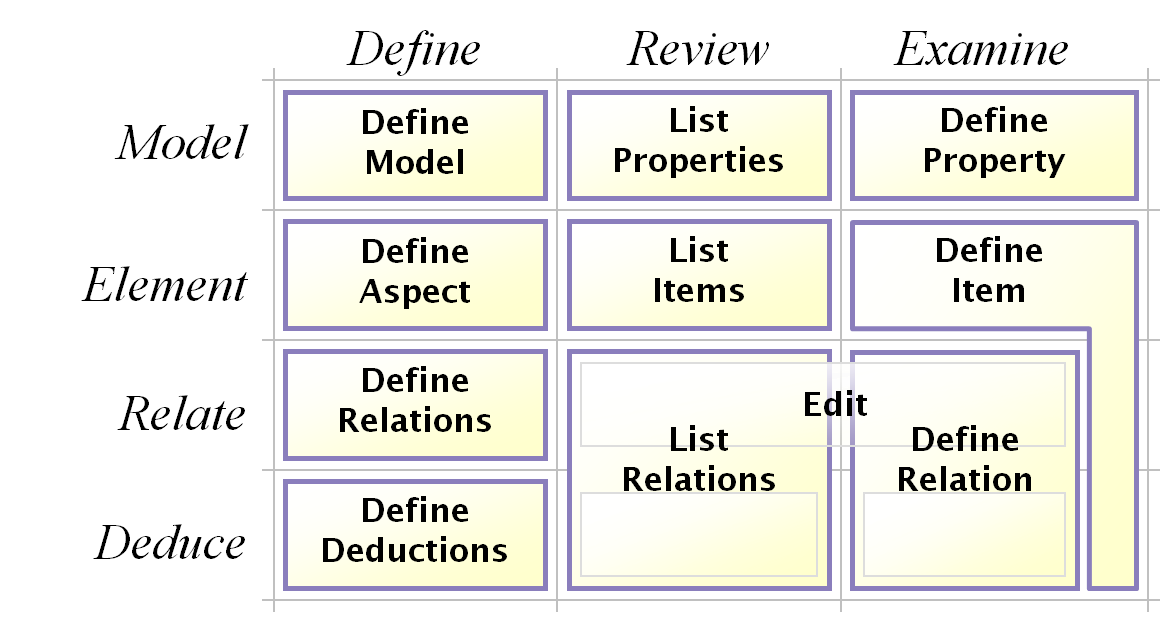 |
| Music |
| Computing |
| Info Arch |
| Theory |
| Practice |
| Glossary |
| Index |
Implementing Information Architecture |
|
It is a good idea to keep a consistent, sharable definition of the Information Architecture as it currently stands in an accessible location. This helps ensure that all participants have a chance to review and contribute to the growing consensus.
However, the practical issues of exactly how these ideas are going to be presented makes this a challenge in almost every Information Architecture engagement.
It is usually a good idea to separate the implementation of Information Architecture from the other elements of IA best practice. The way that the actual architecture is documented and presented is at the core of a successful engagement.

As is explained elsewhere the process usually follows five main steps:
- Identify the key aspects
- Classification of each aspect
- Define the relationship between these classifications
- Infer the implications and check these are consistent
- Exploit the results in the system implementation
These five elements of the architecture are often refined in the order given above. However it would be a mistake to imagine that the process is a linear one, it is quite common to discuss an inference with a group of stakeholders and realise that a key aspect has been omitted and needs to be included.
Location
It is usually best to provide access to all the key material in one "accessible location". This lets the stakeholders have access to the most recently published material and simplifies their participation.
Whether this location is best accessed through a shared directory, web site or a single memory stick will depend on the participants in the project. When deciding on the optimal location the following considerations should be reviewed:
- Who needs to be able to read the items?
- Who will be able to update them?
- How will the information be partitioned, will different parts have different permissions?
Artifacts
This "central location" will hold a variety of artifacts that help stakeholders understand the current state of the Information Architecture. These will include documents, presentations
Technical Systems
When an architecture is immature the information about these elements can be maintained in any flexible form. It is common to keep the list of aspects, classifications and relationships in separate tabs of a spreadsheet. However it is difficult to maintain anything other than the simplest of relationships and almost impossible to build any kind of inferences.
When an architecture is mature it is common to hold these descriptions in a specially tailored data model. However this should be avoided if there is any on-going discussion about the shape of the data.
So the simple tools allow us to take only the first steps, and the complex tools make too many assumptions about where we are going to end up. So, what is the best way to hold a "reasonably complex" architecture while we refine it?
Links to this page
The following pages link to here: Artificial Intelligence, IA Best Practice